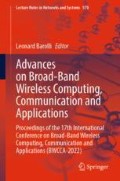Abstract
For trains, cars and other vehicles, the quality of the user comfort level is affected significantly by the driver skill level such as agility, experience and physical condition. In order to assist the drivers, in this paper, we propose a brake assist function for railway vehicles using Fuzzy Logic. We present a comparison study for different Fuzzy Inference types (models). The proposed function provides an intelligent breaking for the train drivers considering velocity, current brake level and environment status on the railway. We evaluate four Fuzzy inference types. The simulation results show that Type-2 FLC2 can provide better brake assisting function for train drivers than other models.
Access this chapter
Tax calculation will be finalised at checkout
Purchases are for personal use only
References
Asprilla, A.M., Martinez, W.H., Munoz, L.E., Cortes, C.A.: Design of an embedded hardware for motor control of a high performance electric vehicle. In: Proceedings of the IEEE Workshop on Power Electronics and Power Quality Applications (PEPQA-2017), pp. 1–5 (2017)
Balan, K., Manuel, M.P., Faied, M., Krishnan, M., Santora, M.: A fuzzy based accessibility model for disaster environment. In: Proceedings of the IEEE International Conference on Robotics and Automation (ICRA-2019), pp. 2304–2310 (2019)
Cena, G., Cibrario Bertolotti, I., Hu, T., Valenzano, A.: On a software-defined CAN controller for embedded systems. Comput. Stan. Interfaces 63, 43–51 (2019). https://www.sciencedirect.com/science/article/pii/S0920548918302101
Chimatapu, R., Hagras, H., Kern, M., Owusu, G.: Hybrid deep learning type-2 fuzzy logic systems for explainable AI. In: Proceedings of the IEEE International Conference on Fuzzy Systems (FUZZ-IEEE-2020), pp. 1–6 (2020)
Ghallabi, F., Nashashibi, F., El-Haj-Shhade, G., Mittet, M.A.: LIDAR-based lane marking detection for vehicle positioning in an HD map. In: Proceedings of the 21st International Conference on Intelligent Transportation Systems (ITSC-2018), pp. 2209–2214 (2018)
Gupta, I., Riordan, D., Sampalli, S.: Cluster-head election using fuzzy logic for wireless sensor networks. In: Proceedings of the 3rd Annual Communication Networks and Services Research Conference (CNSR-2005), pp. 255–260 (2005)
Jammeh, E.A., Fleury, M., Wagner, C., Hagras, H., Ghanbari, M.: Interval type-2 fuzzy logic congestion control for video streaming across IP networks. IEEE Trans. Fuzzy Syst. 17(5), 1123–1142 (2009)
Li, T.S., Chang, S.J., Tong, W.: Fuzzy target tracking control of autonomous mobile robots by using infrared sensors. IEEE Trans. Fuzzy Syst. 12(4), 491–501 (2004)
Mamdani, E.H.: Application of fuzzy algorithms for control of simple dynamic plant. In: Proceedings of the Institution of Electrical Engineers, vol. 121, pp. 1585–1588 (1974)
Nishii, D., Ikeda, M., Barolli, L.: A fuzzy-based approach for reducing transmitted data considering data difference parameter in resilient WSNs. In: Barolli, L., Natwichai, J., Enokido, T. (eds.) EIDWT 2021. LNDECT, vol. 65, pp. 48–57. Springer, Cham (2021). https://doi.org/10.1007/978-3-030-70639-5_5
Nishii, D., Ikeda, M., Barolli, L.: A Takagi-Sugeno fuzzy-based adaptive transmission method in wireless sensor networks. In: Barolli, L. (ed.) 3PGCIC 2021. LNNS, vol. 343, pp. 279–288. Springer, Cham (2022). https://doi.org/10.1007/978-3-030-89899-1_30
Petrakis, E.G.M., Sotiriadis, S., Soultanopoulos, T., Renta, P.T., Buyya, R., Bessis, N.: Internet of things as a service (iTaaS): Challenges and solutions for management of sensor data on the cloud and the fog. Internet Things 3–4, 156–174 (2018)
Ruan, J., Jiang, H., Li, X., Shi, Y., Chan, F.T.S., Rao, W.: A granular GA-SVM predictor for big data in agricultural cyber-physical systems. IEEE Trans. Industr. Inf. 15(12), 6510–6521 (2019)
Silver, D., et al.: Mastering the game of go without human knowledge. Nature 550, 354–359 (2017)
Su, X., Wu, L., Shi, P.: Sensor networks with random link failures: distributed filtering for T-S fuzzy systems. IEEE Trans. Industr. Inf. 9(3), 1739–1750 (2013)
Takagi, T., Sugeno, M.: Fuzzy identification of systems and its applications to modeling and control. In: IEEE Transactions on Systems, Man, and Cybernetics, vol. SMC-15, no. 1, pp. 116–132 (1985)
Wehner, P., Schwiegelshohn, F., Gohringer, D., Hubner, M.: Development of driver assistance systems using virtual hardware-in-the-loop. In: Proceedings of the International Symposium on Integrated Circuits (ISIC-2014), pp. 380–383 (2014)
Wu, D., Nie, M.: Comparison and practical implementation of type-reduction algorithms for type-2 fuzzy sets and systems. In: Proceedings of the IEEE International Conference on Fuzzy Systems 2011 (FUZZ-IEEE 2011), pp. 2131–2138 (2011)
Zadeh, L.: Fuzzy logic, neural networks, and soft computing. ACM Commun. 37, 77–84 (1994)
Author information
Authors and Affiliations
Corresponding author
Editor information
Editors and Affiliations
Rights and permissions
Copyright information
© 2023 The Author(s), under exclusive license to Springer Nature Switzerland AG
About this paper
Cite this paper
Tsuneyoshi, M., Ikeda, M., Barolli, L. (2023). A Brake Assisting Function for Railway Vehicles Using Fuzzy Logic: A Comparison Study for Different Fuzzy Inference Types. In: Barolli, L. (eds) Advances on Broad-Band Wireless Computing, Communication and Applications. BWCCA 2022. Lecture Notes in Networks and Systems, vol 570. Springer, Cham. https://doi.org/10.1007/978-3-031-20029-8_29
Download citation
DOI: https://doi.org/10.1007/978-3-031-20029-8_29
Published:
Publisher Name: Springer, Cham
Print ISBN: 978-3-031-20028-1
Online ISBN: 978-3-031-20029-8
eBook Packages: EngineeringEngineering (R0)

